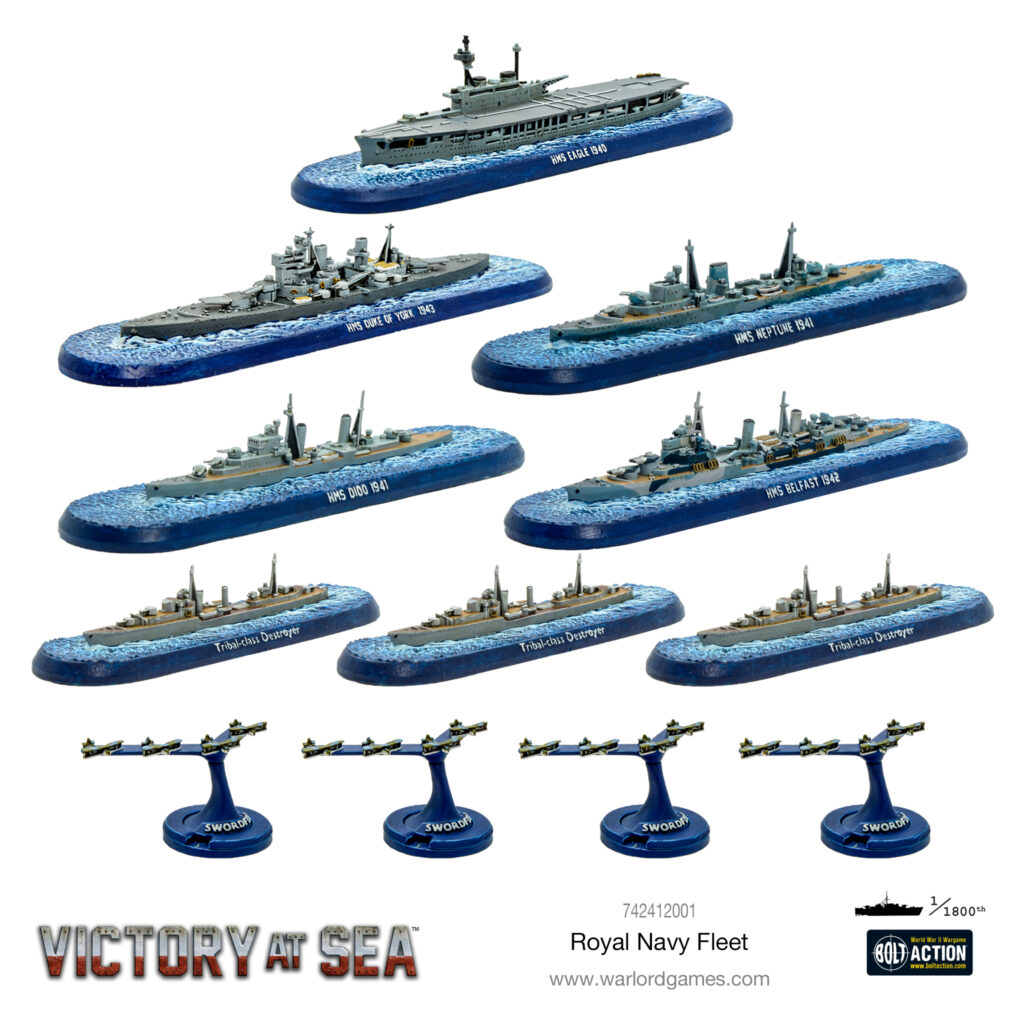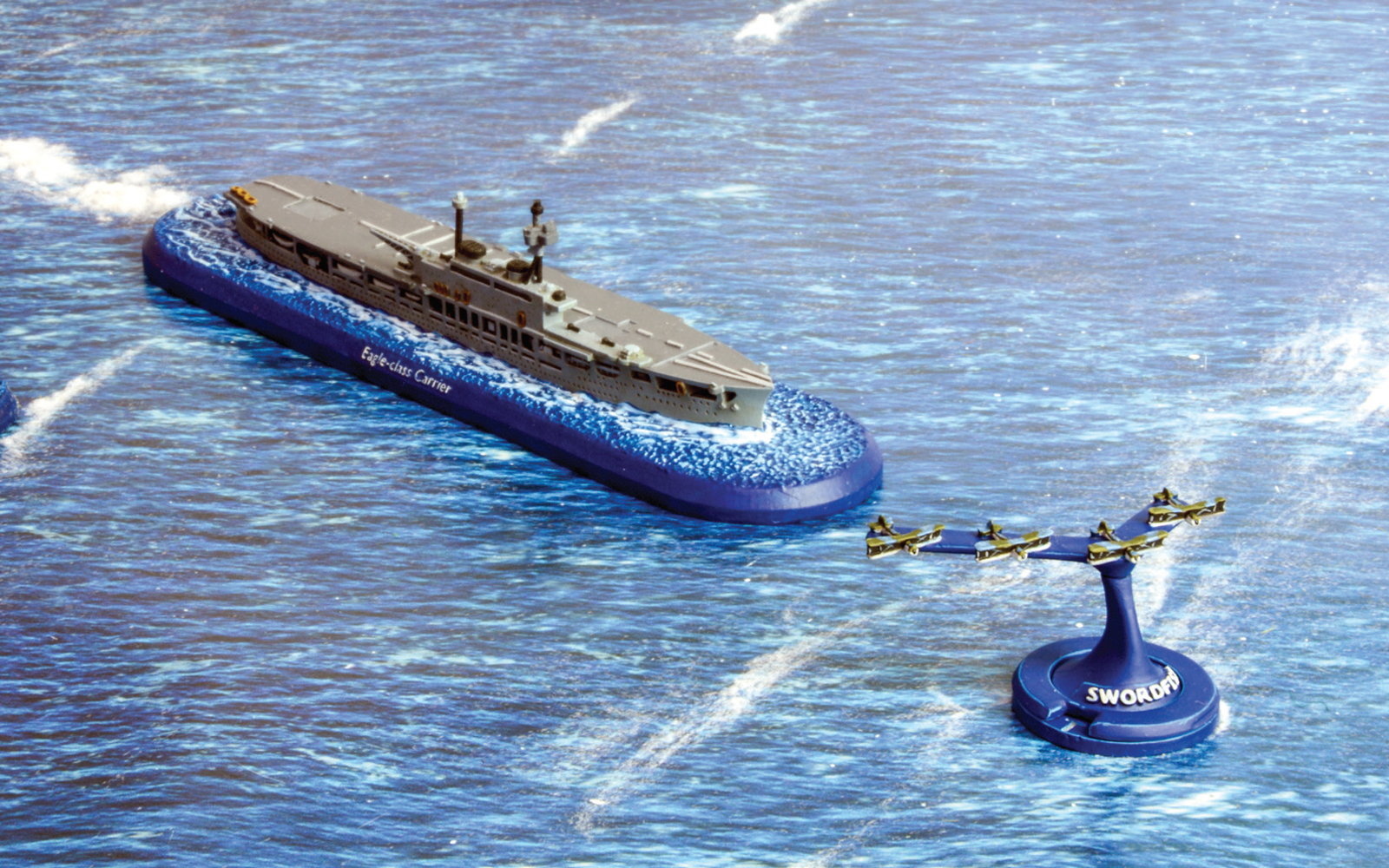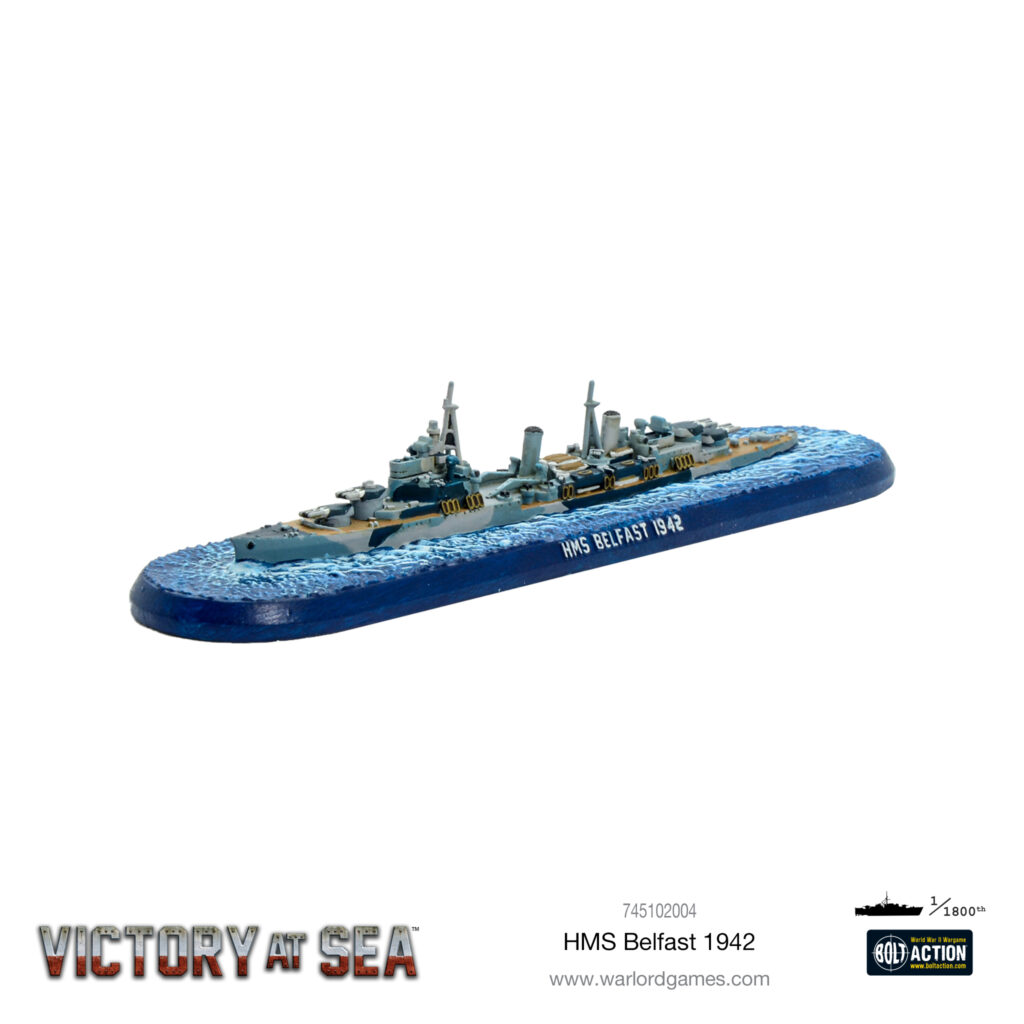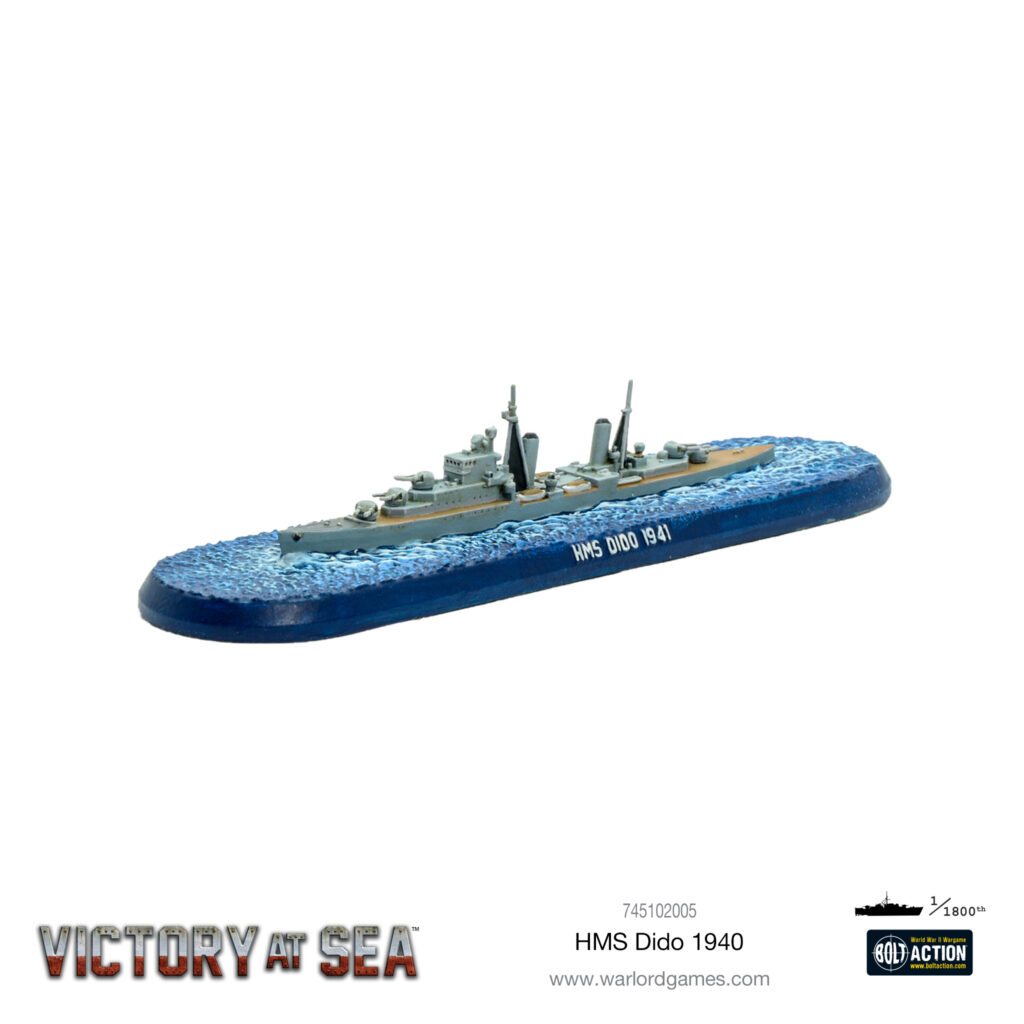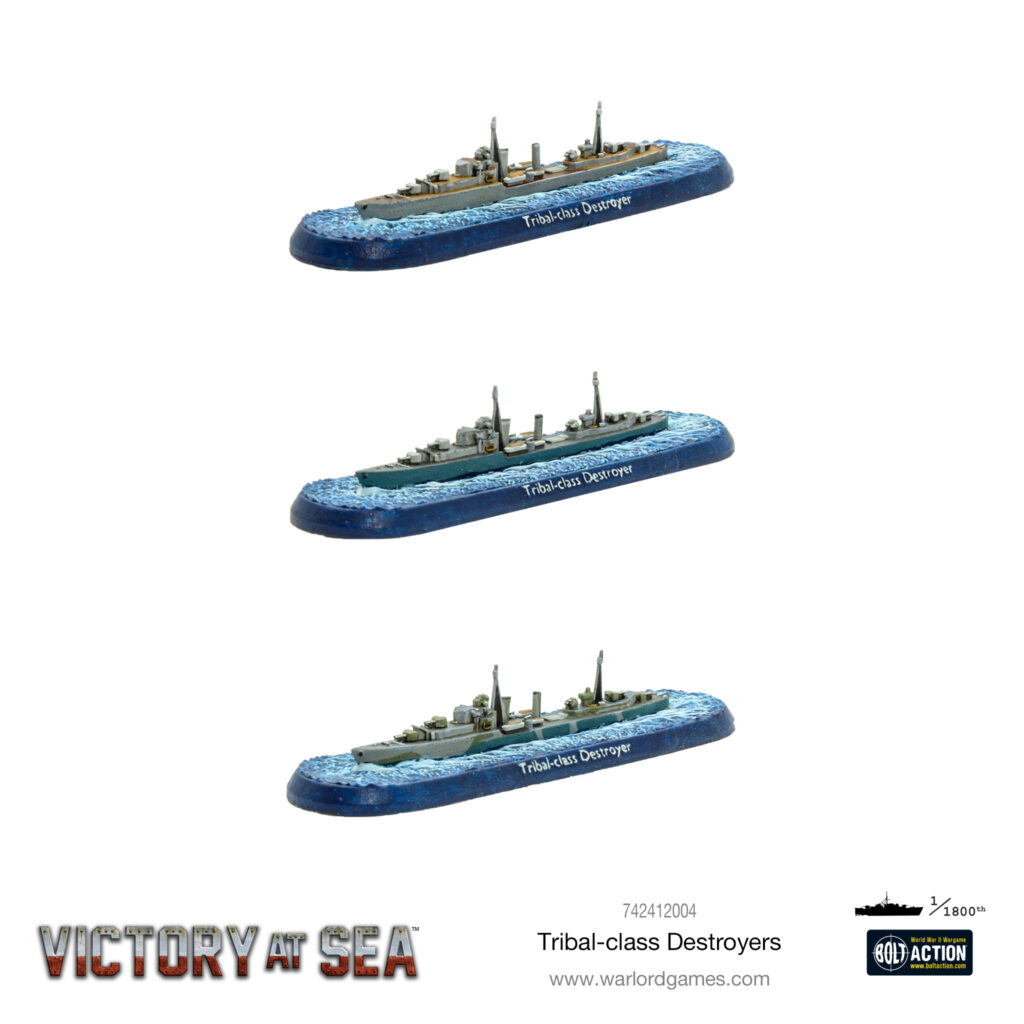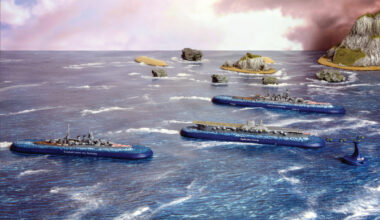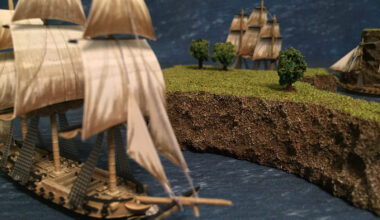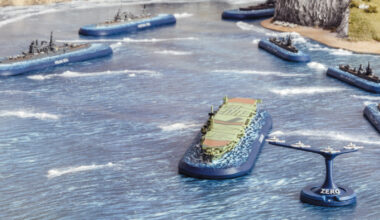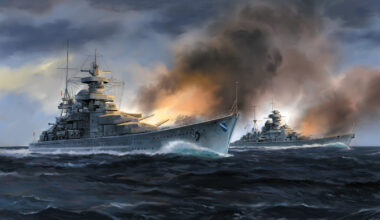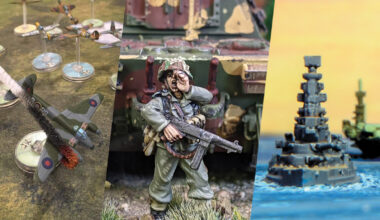The Royal Navy of Great Britain was the world’s greatest navy at the outbreak of the Second World War. Britain went to war with mainly First World War-vintage vessels and at the outbreak of WWII Britain had far more battleships than most other nations, albeit with smaller guns than those of the most modern ships.
British capital ships saw action in the Arctic and the Atlantic against German commerce raiders, in the Mediterranean against Italian forces, and ventured into the Pacific in an attempt to stem the Japanese advance. Though the great fleet actions planned for and desired by the architects of the Royal Navy did not materialize, the Royal Navy adapted well to the war it was destined to fight and emerged with great honour.
HMS Duke of York
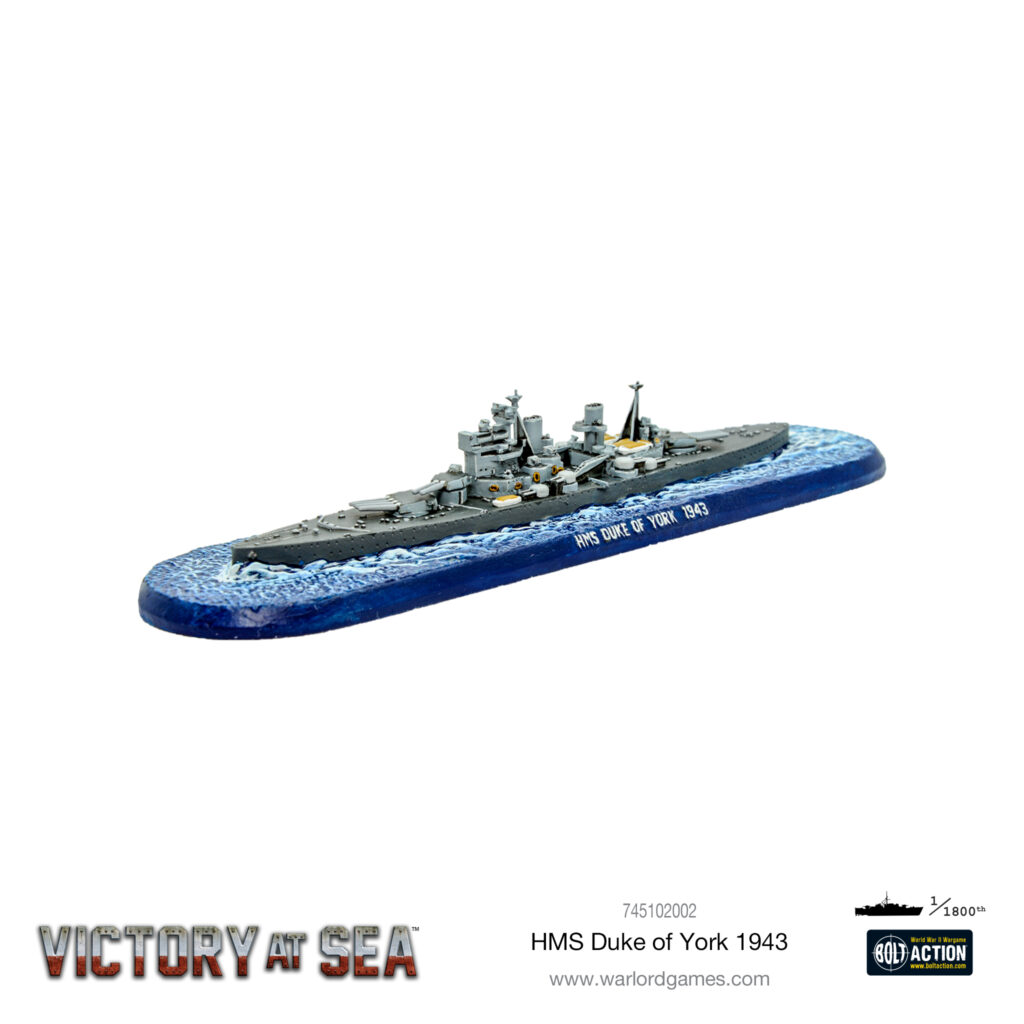
Laid down in 1937 and commissioned in 1941, HMS Duke of York was a King George V-class of battleship. She had the distinction of transporting Winston Churchill across the Atlantic to meet Franklin D. Roosevelt in the Winter of 1941. Churchill wrote of his experience, “Being in a ship in weather such as this is like being in a prison, with the extra chance of being drowned”. Between March and September of the next year she was involved mainly in convoy escort duties, but in October was dispatched to Gibraltar to become the flagship of Task Force H.
She saw little action during this period, her main role being the protection of the task force’s aircraft carriers, but nevertheless assisted the Allied invasion of North Africa. She subsequently participated in operations to divert Axis attentions away from Sicily in Operation Husky, and Operation Leander in an attempt to disrupt German merchant shipping of the coast of Norway.
On December 26th 1943 HMS Duke of York encountered the German battleship Scharnhorst. Exchanging fire, HMS Duke of York suffered some hits with little effect, but for her part landed several hits upon Scharnhorst, silencing a turret and hitting a boiler room. This forced Scharnhorst on the defensive, and she was sunk by torpedoes as well as further heavy fire from Duke of York.
HMS Eagle
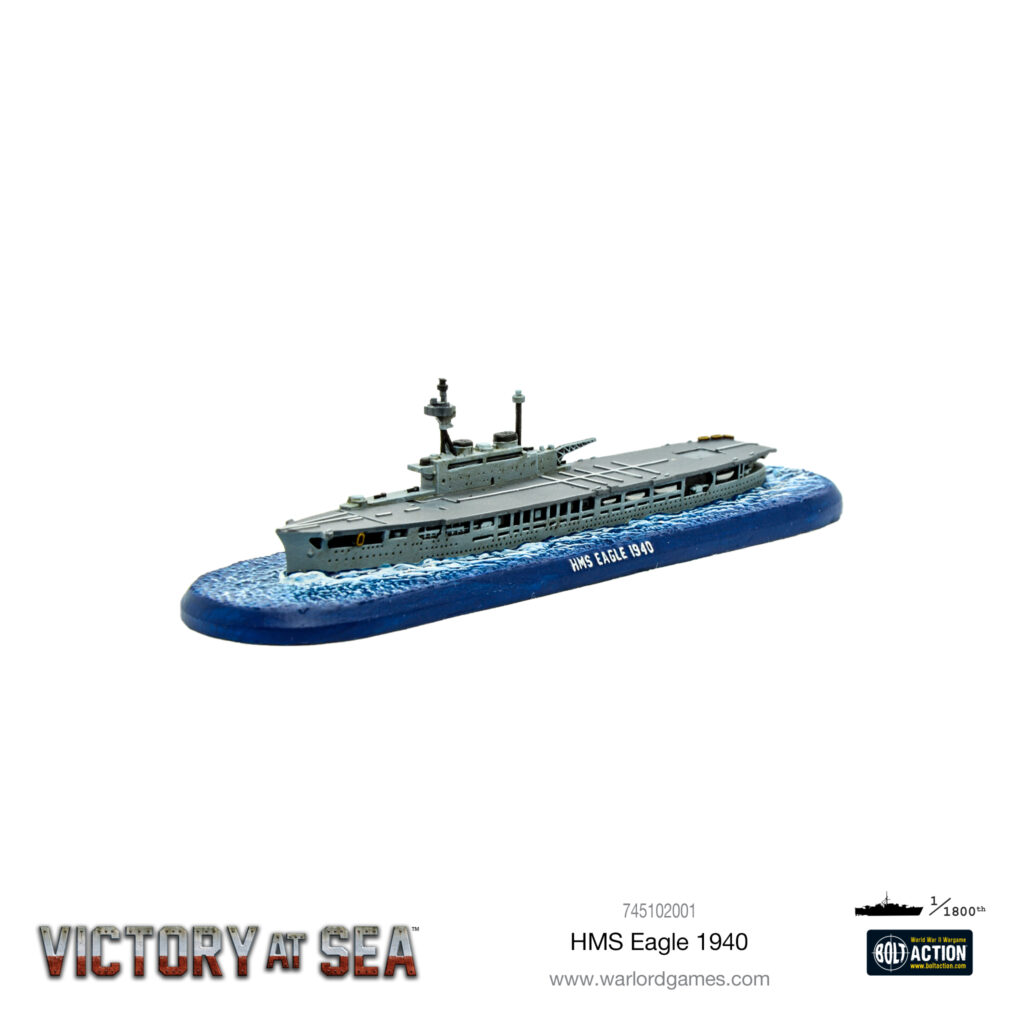
An early aircraft carrier of the Royal Navy, HMS Eagle was originally a super-dreadnought of the Chilean Navy (named Almirante Cochrane), laid down in 1913, but was purchased by the Royal Nav for conversion to a carrier in 1918. This work was not finished until 1924.
Initially deployed in the Indian Ocean against the threat of German commerce raiders, Eagle also saw service in the Mediterranean and the China station. At the outset of the war, the Fleet Air Arm was severely lacking fighters, so her complement of aircraft was limited to solely Fairey Swordfish Torpedo bombers until late 1940.
Upon the Italian entry into the war on the side of the Axis, HMS Eagle was the only Royal Navy carrier available to the British in the Mediterranean but performed sterling service in ferrying fighters to the island of Malta. It was whilst performing this latter duty that she was sunk in August 1942, when torpedoed by the German Submarine U-73.
HMS Neptune
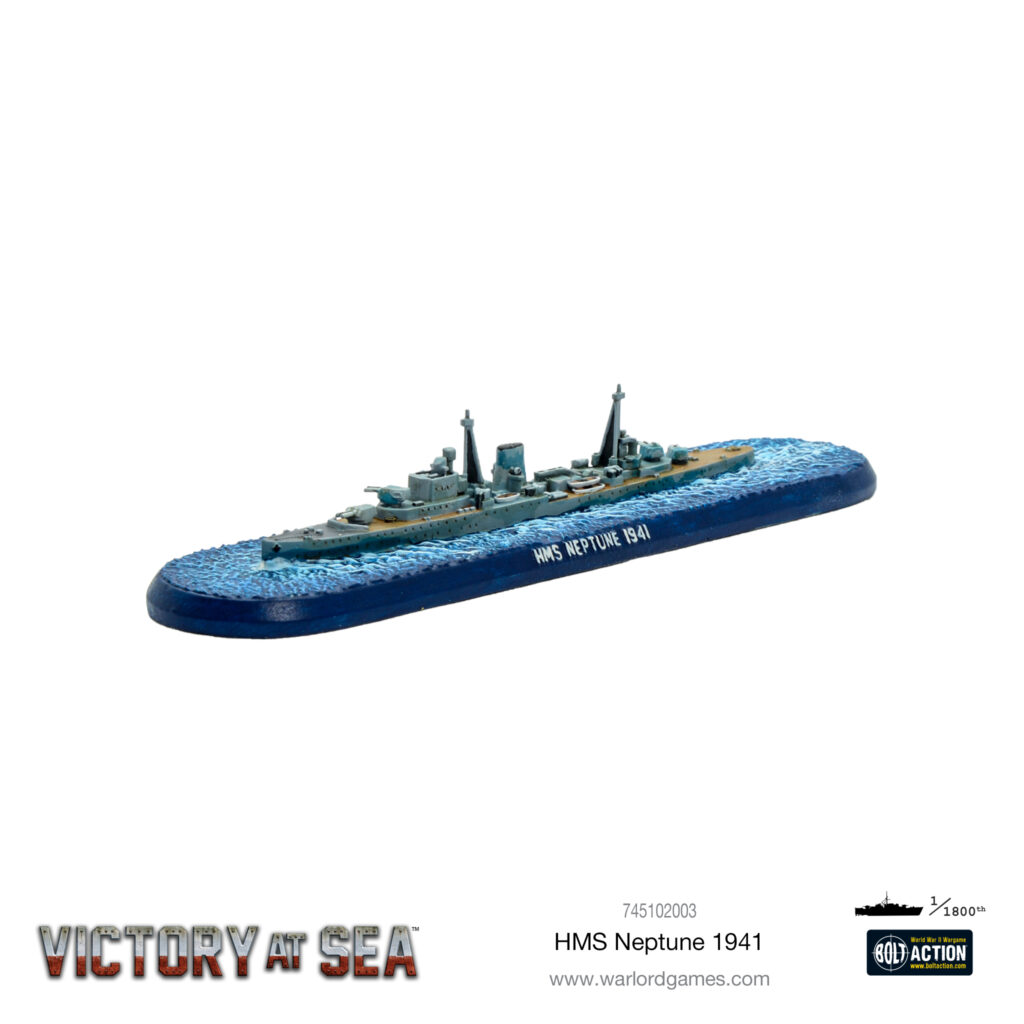
Neptune operated during her World War II service with a crew predominantly composed from the New Zealand Division of the Royal Navy, but also a large proportion of South African personnel. In late 1939 she was in pursuit of the German pocket battleship, Admiral Graf Spee. In the aftermath of the Battle of the River Plate she was sent to Uruguay, however, Graf Spee was scuttled before she could arrive.
She participated in the battle of Calabria in July 1940 against the Italian fleet, suffering damage and losing her floatplane in the process, but inflicting heavy damage to the heavy cruiser Bolzano. Subsequently she participated in operations to disrupt convoys attempting to reach Libya with supplies bound for the efforts of Rommel’s Afrika Korps. She met her end on 18 December 1941, in which Force K wandered into an Italian minefield. A total of four mines were struck, leaving only one survivor, Norman Walton, who spent 15 months as a prisoner of war in Italy.
HMS Belfast
Launched on St Patricks Day 1938, HMS Belfast was one of ten Town-class vessels and the first vessel of the Royal Navy to be named for a Northern Ireland town. She initially operated as part of the British Naval blockade against Germany in 1939. In November of that year, she struck a German mine and spent the next two years undergoing extensive repairs. In November 1942 she returned to action with greater firepower, armour and radar capability.
She escorted Arctic convoys to the Soviet Union in 1943, and later that year was in the Battle of the North Cape, contributing to the destruction of German battleship Scharnhorst. She subsequently assisted in the Normandy landings as part of Operation Overlord and ended the war as part of the British Pacific Fleet. She would go on to see service in the Korean War. She is now moored as a museum ship on the River Thames in London, operated by the Imperial War Museum.
HMS Dido
The first WWII mission of Dido was the escort the carrier, Furious to West Africa in November 1940, before spending four months on convoy escort duty in the Atlantic. She then joined operations in the Mediterranean in 1941, assisting in the evacuation of British forces from Crete in May. Badly damaged in these efforts she spent the latter half of that year in the Brooklyn shipyard of New York.
She would return to service in the East Mediterranean, being a key component with only four British ships covering the area. She later served in the Western Mediterranean and supported the Normandy landings in 1944. Her final mission of WWII was to travel to Copenhagen to accept the surrender of the Kriegsmarine. Along the way, she fired the final naval shot of the war in Europe.
Tribal-class Destoyers
Often called the Afridi-class, this destroyer began the tradition of gunnery over torpedoes. However, the class had a frightening lack of anti-aircraft defences, especially against dive-bombers. The Tribal destroyers were the Royal Navy’s most advanced escorts of the time and saw action in nearly every theatre.
Royal Navy Starter Fleet
The vessels detailed above can all be found in the Royal Navy Starter Box for Victory at Sea, along with four Fairey Swordfish aircraft flights.
Full Contents:
- Eagle-class Carrier – HMS Eagle 1940
- King George V-class Battleship – HMS Duke of York 1943
- Leander-class cruiser – HMS Neptune 1941
- Edinburgh-class cruiser – HMS Belfast 1942
- Dido-class cruiser – HMS Dido 1940
- Tribal-class Destroyer x3
- Torpedo-Bomber Aircraft – Fairey Swordfish x4 flights
- Ship Cards and Damage Sliders
- Assembly Instructions
